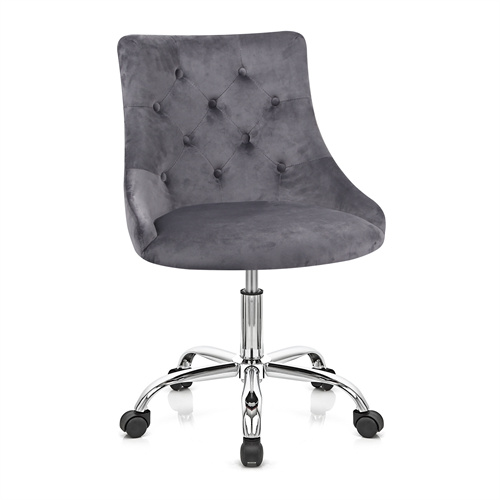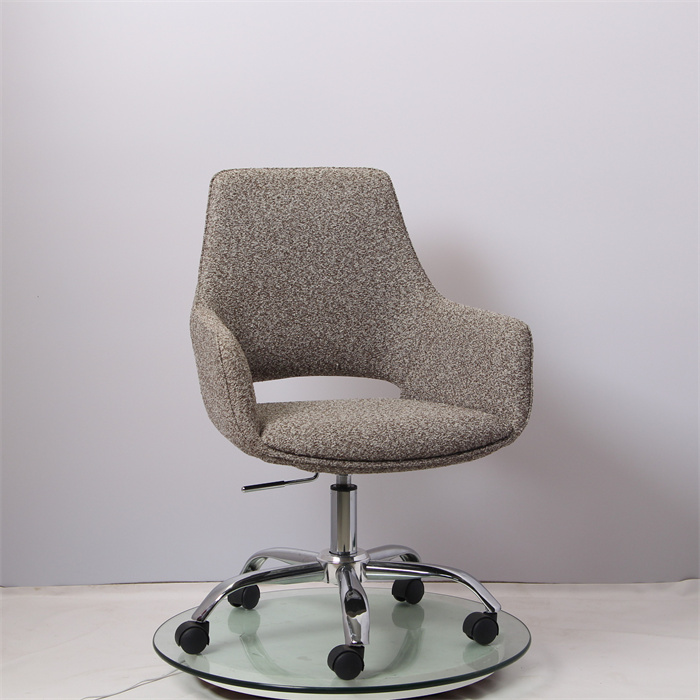Dealing with a sinking office chair can be more than just a minor annoyance—it disrupts your focus, affects your posture, and might even lead to discomfort over time. If your office chair keeps sinking or your desk chair keeps lowering, you're not alone. These issues typically stem from a worn-out gas lift cylinder or an adjustment lever that’s seen better days.
This guide will explain why your office chair keeps sinking and provide straightforward fixes to restore its functionality. Whether your office chair keeps lowering slowly or drops suddenly, you'll find tailored solutions here. Don't let a sinking chair disrupt your productivity—let's resolve this issue today!
Why Does My Office Chair Keep Sinking?
If your office chair keeps sinking down every time you adjust its height, the most likely culprit is a faulty gas lift cylinder. This cylinder works by using pressurized air to hold the chair at your preferred level. Over time, wear and tear or air leaks can compromise its functionality.
Alternatively, a malfunctioning height adjustment lever could be to blame. If your chair keeps sinking and fix attempts have failed, it’s worth assessing whether the lever mechanism is worn out. Recognizing the root cause—whether the cylinder or lever—is critical to choosing the right repair method and saving time.
.jpg)
Step-by-Step Guide to Fixing a Sinking Office Chair
Struggling with a chair that keeps lowering? Let's dive into the solution with a detailed step-by-step guide:
Step 1: Secure the Correct Replacement Gas Cylinder
A faulty gas cylinder is often the reason behind a sinking chair, so finding the right replacement is key. Gas cylinders come in various sizes, so you'll need to measure your current one accurately. Start from the bottom of the cylinder at the chair base and extend to the top, where it attaches to the seat. With these dimensions in hand, source a cylinder that precisely matches your chair's specifications. You can find replacement gas cylinders through online retailers, office furniture stores, or directly from the original manufacturer. Ensure you have the exact model or a compatible one to avoid any further issues.
Step 2: Extracting the Defective Gas Cylinder
The next move is to take out the old gas cylinder. Carefully turn the chair upside down to reveal the base where the cylinder is mounted. You'll typically find that the cylinder can be detached by either unscrewing or disengaging a clip or lock. The process might require a bit of elbow grease, and tools such as a wrench or pliers could come in handy. Be mindful during this step to avoid damaging any other parts of the chair. Proceed with caution and patience.

Step 3: Installing the New Gas Cylinder
With the old cylinder out, it's time to install the new one. Position it at the chair base and ensure it's securely attached. While hand-tightening is often sufficient, you may need to use tools for additional firmness. However, it's crucial to avoid over-tightening to prevent damage to the new cylinder or the chair structure. A correctly installed gas cylinder will be airtight and support the chair at your preferred height consistently.
Step 4: Conducting a Thorough Test
Once the new gas cylinder is in place, carefully set the chair upright and conduct a test. Sit down and adjust the chair to various heights using the lever to ensure stability and proper function. If the chair maintains the set height without sinking, your mission is accomplished! However, if it still descends, re-examine the installation to confirm that everything is properly aligned and secured.
1527.jpg)
Step 5: Assessing and Replacing the Lever Mechanism
Should the sinking issue persist post-cylinder replacement, the lever mechanism may be at fault. This mechanism is pivotal for height control and can deteriorate or break with time. Addressing the lever mechanism is a more complex endeavor and might necessitate expert intervention. Reach out to the chair's manufacturer or seek out a professional repair service for advice on how to repair or replace the lever mechanism effectively.
Conclusion: Take Control of Your Chair’s Comfort
A sinking office chair doesn’t have to ruin your day or hinder your productivity. Whether you decide to follow our DIY repair steps or use a quick fix, addressing the issue ensures you can work comfortably and without interruption.
Remember, maintaining your chair regularly can prevent these problems in the future. If your chair’s wear and tear is beyond repair, consider investing in a durable, high-quality office chair. At VV FURNITURE, we offer a wide selection of ergonomic and stylish chairs designed for lasting comfort and functionality. Visit our website today to explore options tailored to your needs—because a reliable chair is essential for a productive workday.
Conclusion
A sinking office chair can significantly disrupt your comfort and workflow. By following the straightforward steps provided, you can address this issue yourself and restore a stable and supportive seating experience. Remember, a well-maintained office chair can enhance your productivity and well-being at work. If you're considering an upgrade or need a new office chair, VV FURNITURE offers an extensive selection to suit various preferences and needs. Explore our collection on our website and find the perfect chair that meets your requirements for comfort and style!
FAQs
1. Why does my office chair keep sinking slowly?
This issue is usually caused by a failing gas cylinder that has lost its ability to hold air pressure. As the pressure leaks, the chair slowly descends under your weight.
2. Can I stop my chair from sinking without replacing the gas cylinder?
Yes, temporary fixes like using a hose clamp or PVC pipe can hold the chair at your desired height. However, these are not permanent solutions, and replacing the gas cylinder remains the most effective fix.
3. How much does it cost to replace a gas cylinder?
The cost of a replacement gas cylinder typically ranges from $15 to $30, depending on the brand and model. If you hire a professional for the installation, additional labor costs may apply.
4. How do I prevent my office chair from sinking again?
To extend the life of your chair:
- Avoid exceeding the weight limit specified by the manufacturer.
- Use the height adjustment feature gently to reduce wear on the lever mechanism.
- Inspect and maintain your chair regularly for early signs of wear and tear.
5. What if my new office chair keeps sinking?
If a brand-new chair exhibits this issue, it could be due to a manufacturing defect. Contact the retailer or manufacturer to inquire about a replacement or warranty repair.





0723.jpg)